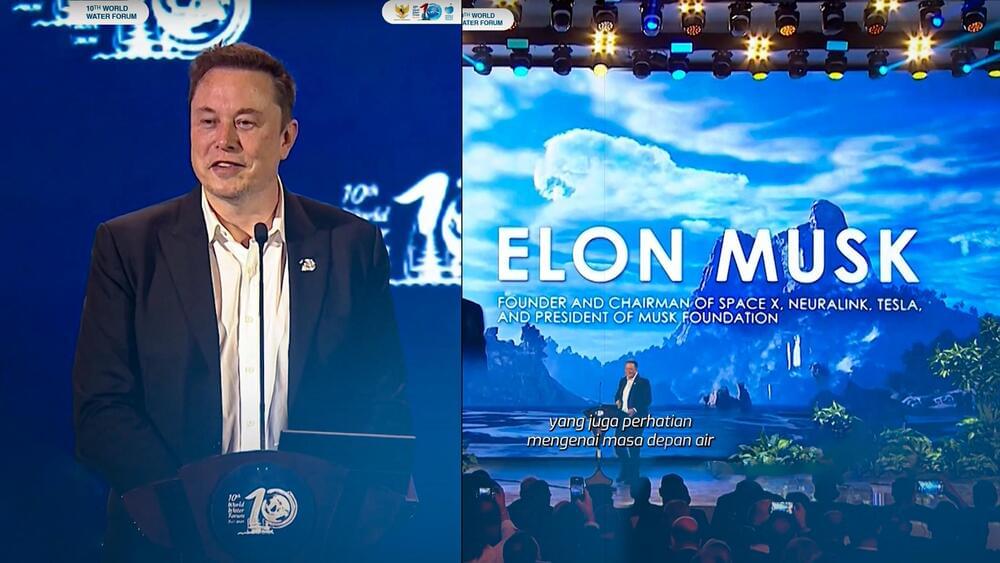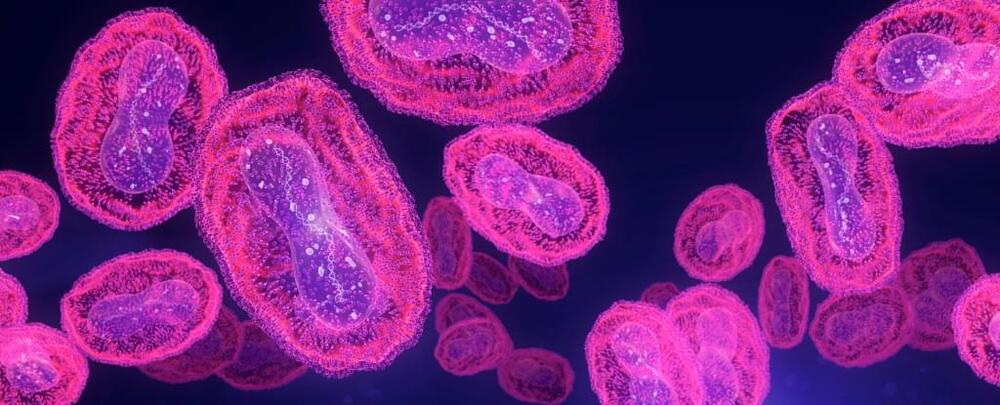Elon Musk dropped in on the 10th world Water Forum in Bali, Indonesia, and outlined a plan to solve humanity’s growing water scarcity crisis. “The potential for solving any given water issue is very good,” he told the assembled dignitaries.



In recent years the second-largest Ebola outbreak ever took place in the wider area and, despite the availability of vaccines and treatments, posed considerable challenges.
What needs to happen
A recent article we co-authored in The Lancet Global Health outlines what needs to be done to contain this outbreak and prevent it from turning into an epidemic, possibly even a pandemic.

The World Health Organization on Wednesday declared the ongoing mpox outbreak in Africa a global health emergency.
WHO convened its emergency committee amid concerns that a deadlier strain of the virus, clade Ib, had reached four previously unaffected countries in Africa. This strain had previously been contained to the Democratic Republic of Congo.
The independent experts met virtually Wednesday to advise WHO Director-General Tedros Adhanom Ghebreyesus on the severity of the outbreak. After that consultation, he announced that he had declared a public health emergency of international concern — the highest level of alarm under international health law.

Researchers found that removing certain inflammation-causing cells from mice every month, starting in their middle age, not only extended their lifespans but also improved their heart health and overall physical function throughout their lives. This method shows promise for extending the period of good health as mice age, potentially pointing to new aging treatments for humans.
Everyone wants to live to a ripe old age, but no one wants to be decrepit. Now, University of Connecticut researchers have demonstrated a treatment that could lengthen life—and vigor—up to the very end.
Even as human lifespans have lengthened over the past century, most people in old age suffer a serious health decline in the last decade of life. Chronic illnesses such as cancer, diabetes, or cardiovascular disease may begin, followed by frailty. Many interventions can prolong life, but not necessarily good health. And nobody wants to spend the last years of an extra-long life in decrepitude.

Pancreatic cancer cells can “starve” thanks to a combination of a cancer drug and a keto diet, an early study has suggested.
Researchers said that their new study points to a “vulnerability” which could potentially lead to a new treatment for the most deadly common cancer.
Only around 5% of people with the disease survive for a decade after diagnosis.

Alarmed by the surge in mpox cases, the Africa Centres for Disease Control has taken the unprecedented step of declaring the outbreak sweeping through African countries a continental public health emergency.
The World Health Organization (WHO) is also meeting to decide whether to trigger its highest global alert level over the epidemic.
These moves come after a virulent strain of the disease spread rapidly to 16 countries and six new countries were affected in 10 days.

Microsoft removed today an arbitrary 32GB size limit for FAT32 partitions in the latest Windows 11 Canary build, now allowing for a maximum size of 2TB.
“When formatting disks from the command line using the format command, we’ve increased the FAT32 size limit from 32GB to 2TB,” the Windows Insider team said today.
Previously, despite this artificial 32GB limit, Windows systems could still read larger FAT32 file systems if they were created on other operating systems or through alternative methods (e.g., from a Windows PowerShell prompt with administrative privileges or using third-party apps that ignored this artificial size limit).

RansomHub ransomware operators are now deploying new malware to disable Endpoint Detection and Response (EDR) security software in Bring Your Own Vulnerable Driver (BYOVD) attacks.
Named EDRKillShifter by Sophos security researchers who discovered it during a May 2024 ransomware investigation, the malware deploys a legitimate, vulnerable driver on targeted devices to escalate privileges, disable security solutions, and take control of the system.
This technique is very popular among various threat actors, ranging from financially motivated ransomware gangs to state-backed hacking groups.


Security researchers disclosed PoC exploit codes for three vulnerabilities (CVE-2023–4206, CVE-2023–4207, and CVE-2023–4208) in the Linux kernel, impacting versions v3.18-rc1 to v6.5-rc4. These “use-after-free” vulnerabilities within the net/sched component could allow local privilege escalation, enabling attackers to gain unauthorized control over affected systems. The vulnerabilities have been given a CVSS score of 7.8, indicating their high severity.